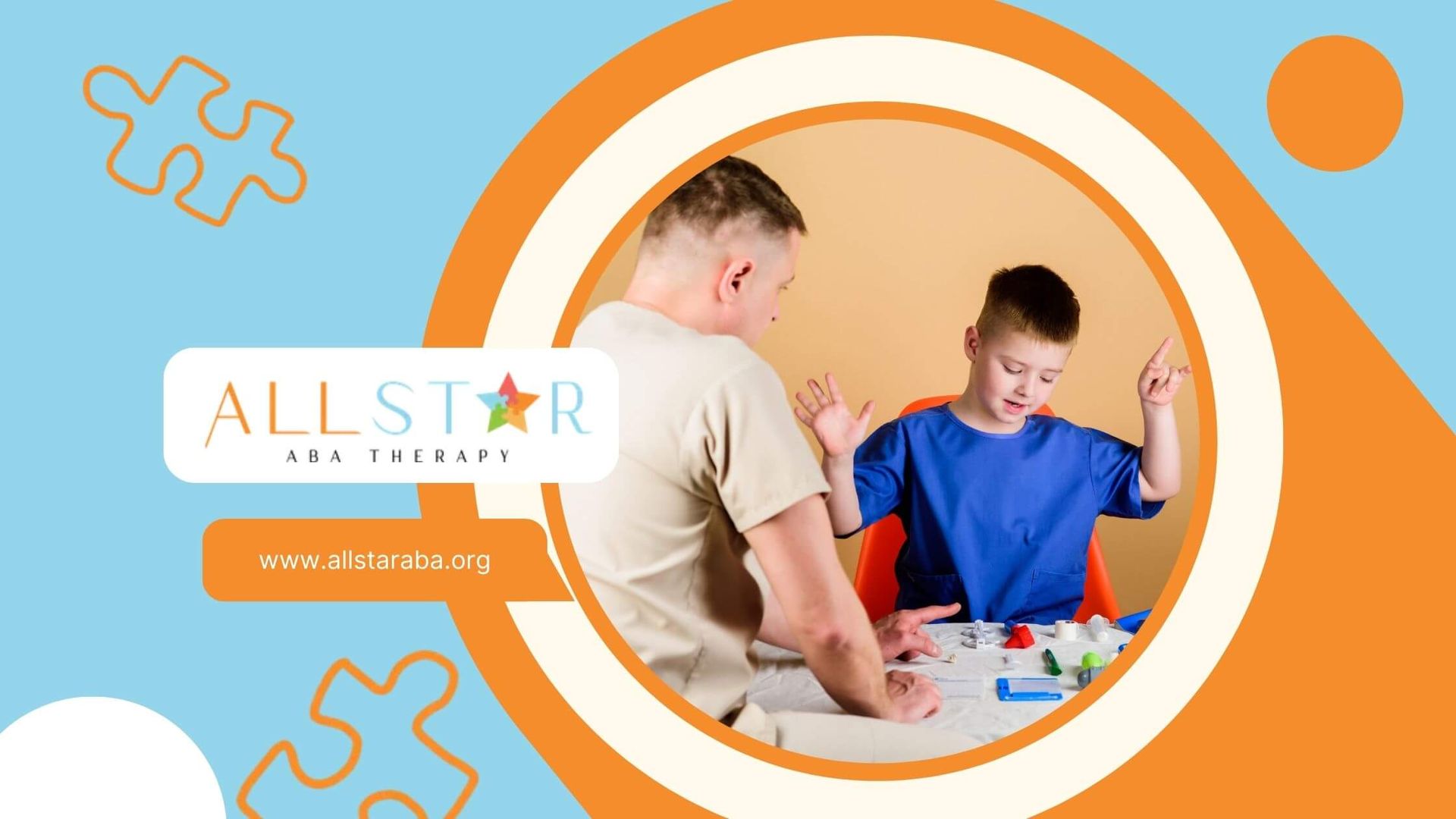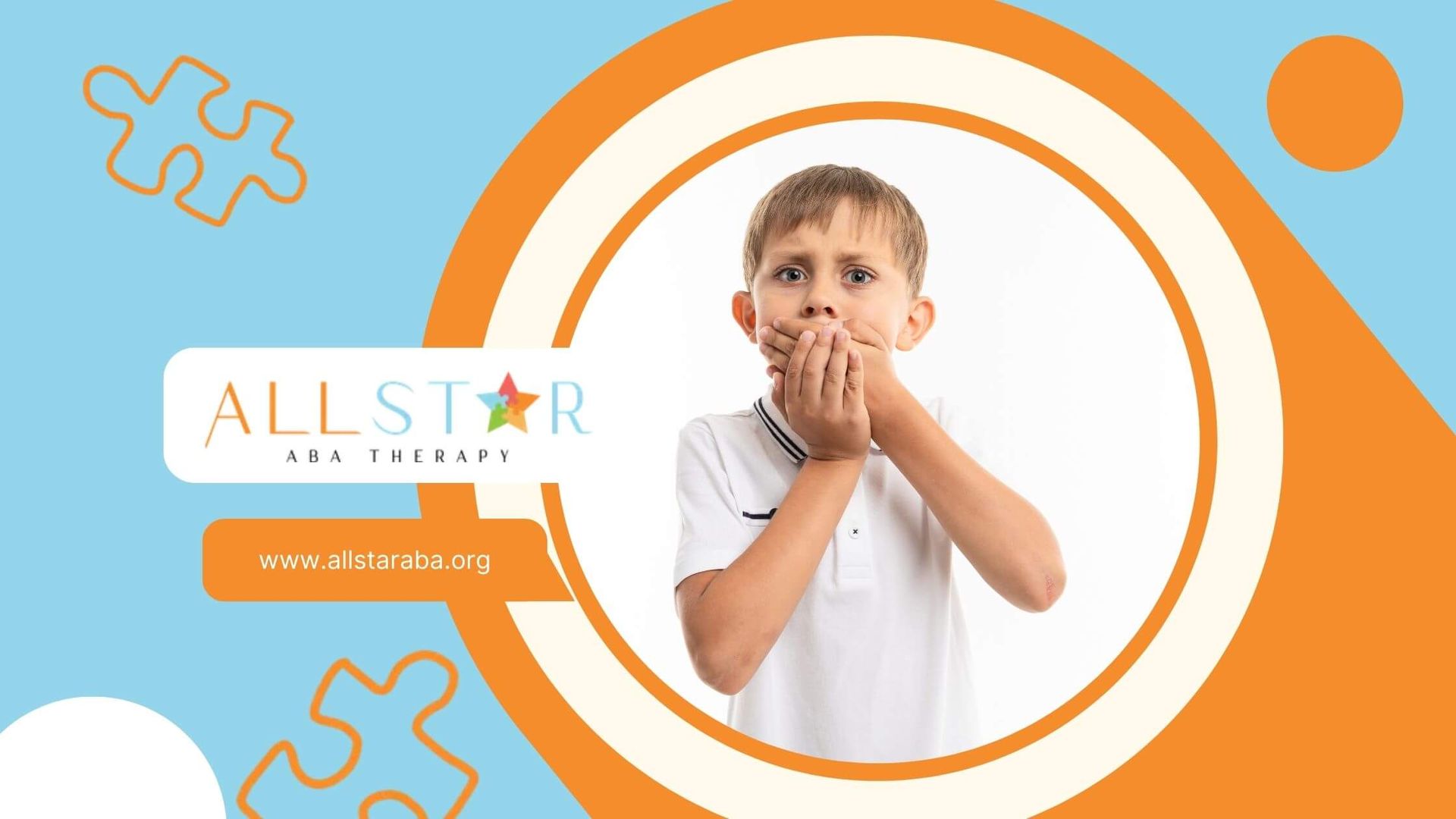New Paragraph
Why Is There So Much Autism Now? Uncovering the Truth
The prevalence of autism spectrum disorder (ASD) has seen a notable increase in recent years, sparking widespread discussion and concern. This rise in diagnoses has led many to question why autism seems more common now than in the past. This article explores the multifaceted factors contributing to heightened autism prevalence rates and addresses common misconceptions surrounding ASD. Understanding the reasons behind this trend is crucial for promoting early detection, appropriate interventions, and support for individuals with autism and their families.
Understanding Autism and Its Diagnosis
Autism spectrum disorder (ASD) is a complex neurodevelopmental disorder characterized by challenges with social interaction, communication, and repetitive behaviors. ASD encompasses a wide range of abilities and challenges, with individuals experiencing varying degrees of severity and symptom presentation. Diagnosing autism is a multi-faceted process that involves developmental screenings, clinical observations, and assessments conducted by qualified healthcare professionals.
Understanding the diagnostic process and criteria is crucial for accurate identification and appropriate intervention. The increase in autism diagnoses in recent years can be attributed, in part, to a greater understanding of the condition and evolving diagnostic practices.
Defining Autism Spectrum Disorder (ASD)
Defining autism spectrum disorder (ASD): ASD is a neurodevelopmental disorder characterized by social communication challenges and repetitive behaviors. The diagnostic criteria for ASD are outlined in the Statistical Manual of Mental Disorders. Early signs can be detected as early as 18 months of age. Diagnosis of ASD is crucial for early intervention. Autism prevalence rates vary among different racial groups. Understanding the symptoms of autism and providing appropriate interventions play a vital role in supporting individuals with ASD.
Criteria and Methods for Diagnosing Autism
The diagnosis of autism spectrum disorder (ASD) relies on a standardized set of criteria outlined in the Diagnostic and Statistical Manual of Mental Disorders (DSM-5), published by the American Psychiatric Association. These criteria encompass two core domains: persistent deficits in social communication and interaction, and restricted, repetitive patterns of behavior, interests, or activities.
Diagnosis typically involves a comprehensive evaluation process conducted by a qualified healthcare professional, often a developmental pediatrician, child psychiatrist, or psychologist. The evaluation integrates information gathered through developmental screenings, clinical observations, parent interviews, and standardized assessments.
Routine pediatrician visits play a crucial role in early identification, with healthcare providers monitoring developmental milestones and initiating further evaluation if concerns arise. Early diagnosis is essential for timely intervention and access to appropriate support services, which can significantly improve long-term outcomes for individuals with ASD.
Historical Perspective on Autism Prevalence
Understanding the perceived increase in autism necessitates considering historical data. While pinpointing when autism rates began to rise definitively is challenging due to evolving diagnostic practices, research suggests increased prevalence since the mid-20th century. However, it is debated whether this increase reflects a genuine rise in autism cases or improved identification and reporting.
Previously, limited awareness and understanding of ASD often resulted in underdiagnosis or misdiagnosis. As awareness grew, so did research efforts, leading to a refined understanding of autism and leading to broader diagnostic criteria, ultimately increasing identification rates.
Tracking the Increase in Autism Over Decades
Autism prevalence rates have notably increased in the United States over recent years, prompting extensive research and analysis. The Centers for Disease Control and Prevention (CDC) has played a crucial role in tracking these trends through its Autism and Developmental Disabilities Monitoring (ADDM) Network.
Data collected by the ADDM Network, which tracks autism prevalence among 8-year-old children, demonstrate a steady upward trend:
| Year | Estimated Autism Prevalence |
|---|---|
| 2000 | 1 in 150 children |
| 2002 | 1 in 150 children |
| 2004 | 1 in 125 children |
| 2006 | 1 in 110 children |
| 2008 | 1 in 88 children |
| 2010 | 1 in 68 children |
| 2012 | 1 in 68 children |
| 2014 | 1 in 59 children |
| 2016 | 1 in 54 children |
| 2018 | 1 in 44 children |
| 2020 | 1 in 36 children |
While these figures highlight the increasing prevalence of autism diagnoses, it is essential to recognize the multiple factors contributing to this trend. Experts largely attribute the rise to a combination of increased awareness, broadened diagnostic criteria, and improved screening and diagnostic practices, rather than a true surge in the number of individuals with autism.
Milestones in Autism Recognition and Research
Autism research has witnessed remarkable progress, contributing significantly to our understanding, diagnosis, and treatment of ASD. Extensive research efforts have led to a shift from viewing autism as a rare disorder to recognizing it as a relatively common neurodevelopmental condition. This evolving understanding has been crucial in driving public awareness and advocating for appropriate interventions.
Advancements in genetics have enabled scientists to identify specific genes associated with an increased risk of autism. While no single gene is solely responsible, these discoveries provide valuable insights into the complex interplay of genetic and environmental factors influencing autism development.
Furthermore, ongoing research focuses on developing more effective early detection methods and interventions. By identifying children with ASD at younger ages, healthcare professionals can implement early intervention programs, which are proven to improve long-term outcomes significantly. These combined efforts demonstrate the remarkable progress in autism research and its profound impact on the lives of individuals with ASD and their families.
Key Factors Contributing to the Rise in Autism Rates
The increase in autism diagnoses cannot be attributed to a single cause. Instead, it reflects the multifaceted interplay of several factors: the expansion of diagnostic criteria, enhanced detection and reporting systems, and evolving societal and environmental influences. Understanding these factors is crucial for accurate interpretation of autism prevalence data and for shaping effective public health policies and support services.
It’s important to note that while these factors likely play a role, they don’t diminish the experiences of autistic people and their families. The need for support, resources, and understanding remains paramount.
Expansion of Diagnostic Criteria
The diagnostic criteria for autism have undergone significant revisions over the years, contributing to the increased prevalence of autism diagnoses. Previously, the DSM categorized autism and other related conditions, like Asperger syndrome and pervasive developmental disorder-not otherwise specified (PDD-NOS), as distinct entities.
However, the DSM-5, published in 2013, introduced a significant change by merging these separate diagnoses into a single umbrella diagnosis: autism spectrum disorder. This shift recognizes that autism exists on a spectrum, with individuals exhibiting a wide range of symptom severity and presentation.
As a result of this broadened diagnostic criteria, individuals who may have previously fallen outside the narrower diagnostic boundaries of autism are now appropriately recognized as being on the autism spectrum. This expansion has led to a more inclusive approach to diagnosis, capturing a broader population of individuals who can benefit from early intervention and support services.
Enhanced Detection and Reporting Systems
Alongside evolving diagnostic criteria, improvements in detection and reporting systems have contributed to the increased identification of autism. Heightened awareness among healthcare providers and the general public has led to more individuals being referred for evaluation and diagnosis.
Healthcare providers are now more likely to recognize the early signs of autism and initiate appropriate screening and diagnostic procedures. Training programs for pediatricians, educators, and other professionals who interact with children have enhanced their understanding of autism and its diverse presentations.
Furthermore, electronic medical records and data collection systems have improved the tracking and surveillance of autism. These advancements allow for more comprehensive data collection and analysis, contributing to a better understanding of autism prevalence and trends over time.
Societal and Environmental Influences
While the exact causes of autism are not fully understood, research suggests that a complex interplay of genetic and environmental factors contributes to its development. Environmental factors, including prenatal and early childhood exposures, have been investigated as potential contributors to the rising prevalence of autism.
Some studies suggest a potential link between certain environmental toxins and an increased risk of autism; however, further research is needed to establish definitive causal relationships. Cultural differences in parenting practices, social norms, and access to healthcare services can also influence the identification and reporting of autism, leading to variations in prevalence rates across different populations.
It's important to note that environmental factors alone do not determine whether or not a child develops autism. Genetic predisposition, along with the timing and interplay of various environmental influences, likely play a crucial role. Ongoing research seeks to clarify the contributions of these factors and develop strategies to mitigate potential risks.
Debunking Common Myths About Autism
Misconceptions about autism are pervasive, often leading to fear, stigma, and misinformed decisions. One of the most harmful and widely debunked myths is the notion that vaccines cause autism. Numerous large-scale studies have consistently demonstrated no causal link between vaccines and autism.
Another misconception attributes the rise in autism solely to environmental factors. While environmental influences might play a role, attributing autism solely to environmental causes oversimplifies a complex interplay of genetics and environment. It’s vital to rely on evidence-based information from reputable sources to dispel these myths and promote accurate understanding.
Clarifying the Vaccine-Autism Misconception
The vaccine-autism misconception, despite being thoroughly debunked by scientific evidence, persists as a harmful myth with potentially dangerous consequences. This misconception originated from a fraudulent 1998 study that was later retracted due to ethical violations and fabricated data. Numerous subsequent studies, often involving hundreds of thousands of participants, have consistently found no association between vaccines and autism.
Major health organizations worldwide, including the Centers for Disease Control and Prevention (CDC) and the World Health Organization (WHO), have vehemently refuted the vaccine-autism link. Vaccines are among the safest and most effective public health interventions in history, saving millions of lives and preventing serious illnesses.
Choosing not to vaccinate based on misinformation poses a significant risk, not only to unvaccinated individuals but also to those who cannot receive vaccines due to medical reasons. It is crucial to rely on credible scientific evidence and consult with qualified healthcare professionals regarding vaccines and their safety.
Addressing Genetic vs. Environmental Factors
The exact causes of autism remain an active area of research; however, a growing body of evidence suggests a complex interplay of genetic and environmental factors. Genetic mutations, inherited or spontaneous, have been linked to an increased risk of autism. While no single "autism gene" exists, researchers have identified multiple genes that may interact with environmental triggers to influence autism development.
Environmental factors, such as exposure to certain toxins, maternal infections during pregnancy, or complications during birth, have also been implicated in autism’s development. It is believed that genetic predisposition might make some individuals more susceptible to environmental influences, increasing their risk of developing autism.
It’s crucial to emphasize that assigning blame solely to genetics or environmental factors is an oversimplification. Autism’s complexity suggests a multi-factorial origin, where genes may influence an individual's susceptibility to environmental triggers. Further research is crucial to disentangling the complex interactions between genes, environment, and autism risk.
As the conversation around autism grows, more families are seeking support from a leading autism therapy provider to help guide them through the diagnosis and treatment process. With the rise in autism awareness and diagnoses, it's essential to find a provider who not only understands the complexities of the spectrum but also offers personalized, evidence-based therapies. By working with a provider that tailors interventions to each child’s needs, families can ensure their children receive the best care possible. If you're ready to explore effective autism therapy options for your child, take the first step today and connect with a trusted provider who can make a difference in their development.
Conclusion
In conclusion, mental health is a crucial aspect of overall well-being that should not be neglected. By implementing simple yet effective tips like maintaining a healthy sleeping routine, being mindful of what you consume, engaging in therapeutic activities, and fostering a positive mindset, you can take proactive steps towards caring for your mental health. Remember, prioritizing your mental well-being is essential for leading a fulfilling and balanced life.
At All Star ABA, we understand that the rise in autism diagnoses has led to important conversations about awareness, early intervention, and support. While the reasons behind the increase may be complex, the key is providing personalized, effective therapy tailored to each child’s unique needs. Our dedicated team specializes in helping families navigate this journey with ABA therapy that fosters positive change and growth. If you’re seeking professional guidance and tailored care for your child, contact All Star ABA today to take the next step toward meaningful progress.
Frequently Asked Questions
What age does autism usually get diagnosed?
Early signs of autism can sometimes be detected in infancy, but many children are diagnosed later. While the diagnosis of autism can be made as early as 18 months of age, most children receive a diagnosis after the age of two. Ideally, healthcare professionals strive for early detection and diagnosis to initiate appropriate interventions and support services as soon as possible.
Can dietary changes impact autism symptoms?
While some individuals with autism may experience sensitivities to certain foods, there is no scientifically proven evidence that dietary changes alone can cure or treat autism. However, some dietary modifications might help manage specific symptoms or co-occurring conditions. A comprehensive approach to autism management should always include appropriate support, early intervention, and individualized treatment plans tailored to the individual's needs.
How can society better support individuals with autism?
Society can better support individuals on the autism spectrum by promoting acceptance, understanding, and inclusion. Providing access to appropriate interventions, educational resources, and community support programs that foster social skills, communication, and independence are essential. By embracing neurodiversity and celebrating the unique strengths of individuals with autism, we can create a more inclusive and supportive environment.
Need Support?
We're Here to Help!
Our experienced team is ready to assist you. Reach out today to discuss how we can support your child's development and well-being.
Get started with expert ABA therapy today.








